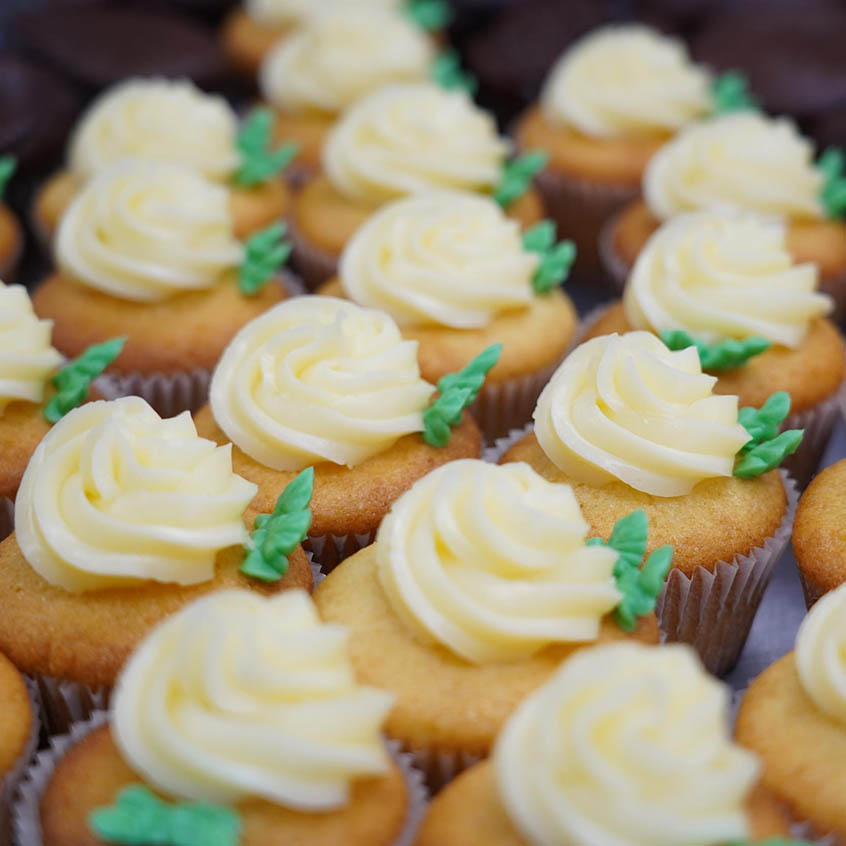
Learn the basic techniques of pastry and baking in this 12-session class. The course familiarizes students with the recipes and concepts used by professional bakers and pastry chefs, which form the basis of every competent baker's repertoire. Topics include: Lesson 1: Quick Breads Lesson 2: Yeasted Breads Lesson 3: Pate a Choux Lesson 4: Pies Made with Pate Brisee Lesson 5: Tarts Made with Pate Sucree & Cheesecake Lesson 6: Fruit Desserts Lesson 7: Puff Pastry Production & Cookies Lesson 8: Baking Puff Pastry Lesson 9: Custards & Mousses Lesson 10: Egg Foam Cakes Lesson 11: Layer Cakes Lesson 12: Desserts Around the World The program investigates a broad range of pastries --- both classic and modern --- to provide a full understanding of all baking categories.

You will work in teams to execute the class menu. At the end of class, participants gather to enjoy the food they have prepared. Wine is served with meals in most classes. All class menus are subject to change. While a snack platter is offered in both morning and evening classes, you may want to consider a light snack before joining us for class. Students are encouraged to bring a light lunch or dinner to all pastry classes.

You will work in teams to execute the class menu. At the end of class, participants gather to enjoy the food they have prepared. Wine is served with meals in most classes. All class menus are subject to change. While a snack platter is offered in both morning and evening classes, you may want to consider a light snack before joining us for class. Students are encouraged to bring a light lunch or dinner to all pastry classes.
Master the art of classic Afternoon Tea in this 3-hour, hands-on class! You'll prepare a delectable spread from scratch, including light and fluffy scones, homemade strawberry jam, and rich clotted cream. Learn to bake a perfect Victoria Sponge and assemble delicate cucumber and smoked salmon finger sandwiches. Impress your friends and family with your newfound skills!
While handling poultry can seem daunting, it really can be a clucking good time! In Knife Skills 2 you'll discover the fundamental techniques required to transform a whole chicken into popular cuts. We'll cover such topics as trussing and spatchcocking, ensuring you leave with the confidence to tackle any chicken preparation in your home kitchen. No matter how you feel when you enter the class, the class promises to enhance your knowledge of poultry preparation and take your skills to the next level. While not a requirement, it helps to have practiced the skills of Knife Skills 1 before taking this class.
Before heading out to your local sushi bar for your next date night, come to ICE to learn how to create your own sushi and sake bar at home. Together, you'll start by learning the basics of how to make the foundation of all sushi: delicious, seasoned rice. You'll then create a variety of sushi accoutrements, along with vegetables and raw fish. Finally, you'll learn to make traditional hand rolls, maki, futomaki, and nigiri, before sitting down to eat with a refreshing glass of Japanese sake or a cucumber-sake cooler.
Ranked as America’s Best Culinary School (USAToday 2019), our roster of Chef-Instructors have run top kitchens around the globe.
| (Separate multiple addresses with commas like: john@aol.com, jane@aol.com) | |